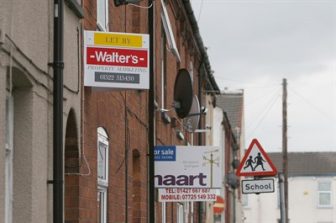 Rents paid by private tenants have increased at their greatest annual rate for more than five years, as demand continues to heavily outweigh demand, the latest data from the Office for National Statistics (ONS) shows.
Rents paid by private tenants have increased at their greatest annual rate for more than five years, as demand continues to heavily outweigh demand, the latest data from the Office for National Statistics (ONS) shows.
The figures reveal that private rental prices in the UK increased by 2.3% in the year to February, the largest annual growth rate since December 2016, led by gains in the East Midlands, where prices are up 3.8% year-on-year.
London continues to lag behind – excluding the capital, the ONS said rental prices in the UK rose by 3.2% in the 12-month period, up from 3% a month earlier.
Looking at each nation, private rental prices grew the most in Scotland (2.6%), followed by England (2.1%) and Wales (1.4%).
Propertymark’s latest research goes some way to showing why rents are rising sharply.
In February, Propertymark members reported that an average letting agent branch had 142 applicants registered on their books. This is a record high for the month of February and year-on-year a 73% increase from February 2021 when agents recorded 82 applicants per branch. This figure has been on an upwards trend since April 2017.
Of these applicants, an average of 78 were newly registered in the last month.
Agents in the South West of England reported the highest demand with an average of 195 applicants per branch, closely followed by the North East of England where agents reported an average of 184.

Last month, Propertymark members reported that an average branch had just five properties available to rent. This is a 44% decrease from a four-year average of nine. A downward trend that Propertymark’s data shows started to fall in March last year.
Agents in the North West of England, East Midlands reported the lowest stock at an average of 2% branch with Wales close behind with an average of three.
Nathan Emerson, chief executive, Propertymark’s chief executive, commented: “There are many factors affecting the private rented sector which are impacting stock levels. Whilst in terms of rising rent prices it appears to be a good time to be an investor, once other factors are included yields can be much lower.
“Many landlords have struggled under the increasing legislative and financial pressures they are facing. As we await the Renter’s Reform White Paper it is clear more changes are on the way and it’s vital that the private rented sector is valued to avoid unintended consequences.”


The rising of rent and demand is the result of reducing supply. So one should ask why there is reducing supply? This is because the investors in the the PRS have lost trust and confidence in Government/Local Government and the wholesale Landlord Bashing which has been going on for years now. The soon to be loss of control of your investment which will arise out of abolition of S21 has been scaring off savvy investors. The pushing for rent control by people like Shelter, Generation Rent, and the Mayor of London and others makes it a high risk place to invest and a disincentive to invest in housing. The infinate anti landlord schemes being devised by so called charities and politicians only go to reinforce why investors in rented homes need to think very carefully when considering this form of investment. Every day there is more and more anti landlord sentiments generated by those who do not invest or actually provide housing is it not surprising there is a reluctance to risk your hard earnt savings? Higher risk the higher returns need to be. The costs are often not fully reflected upon and additional burdens of constantly upgrading property standards has to be paid from somewhere; eating into returns.
You must be logged in to like or dislike this comments.
Click to login
Don't have an account? Click here to register
I’ve said this before, but worth mentioning again. Just wait till winter 2022 and watch the arrears increase ten fold. Far too many people are so desperate for a roof over their heads they will take anything they can get and just as many landlords taking tenants that cannot afford the rent long term. This is nothing new with averaging 40,000 possessions per year order for a decade (exclude Covid). So many DIY landlords haven’t a clue or don’t even bother to do adequate checks, just see £’sss that comes back to bite really hard and they then blame the tenant!
A tenant can afford to rent in PRS (not just pay the rent) or they can’t.
Some (not all) landlords need to wise up, get your heads out of the bucket of sand with the rent hikes, for you are the ones that will go bust, not maybe and end up bringing in rent controls for the industry.
A simple affordability guide is multiply the monthly rent by 36 to reach a target of required guranteed income for the next 12 months and then start to look at all the other financial factors to be taken into consideration. Any wonder “No DSS”?
You must be logged in to like or dislike this comments.
Click to login
Don't have an account? Click here to register
Totally agree with everything!
You must be logged in to like or dislike this comments.
Click to login
Don't have an account? Click here to register